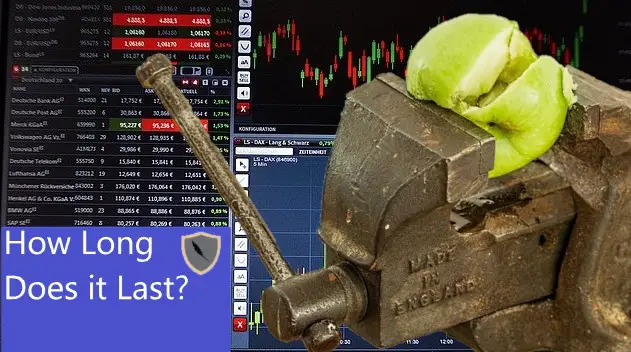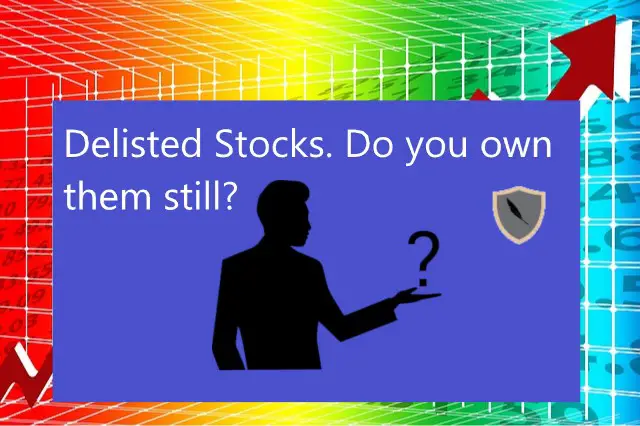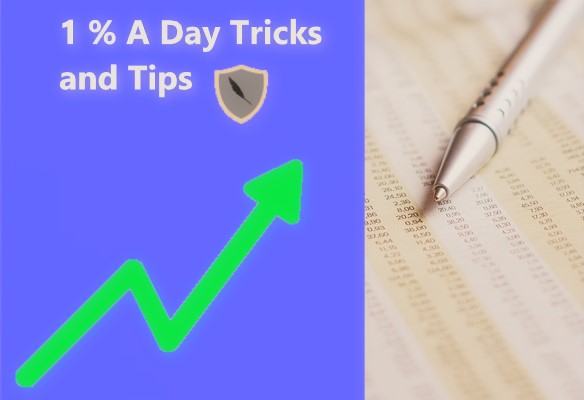The stock market is a daunting thing, many people don’t know where to start and end up losing all their money. Fortunately you can easily prevent this by simply arming yourself with the right knowledge. Here I am going to show you 11 things that every single beginner should know before they even start their investment journey.
Simply put, every beginner should know and be familiar with the following 11 things in order to succeed in the stock market.
- What is a stock
- What is a stock market
- How do you buy and sell stocks
- What is the difference between a bear market and a bull market
- How to tell when you should buy and sell a stock
- How to calculate risk
- What is an ETF
- The power of compounding return
- What is hedging
- What is average market return
- Generating alpha in their portfolio
Just by understanding the above list you will instantly increase your investment skillset and see yourself building wealth passively. It pays to spend a bit of time researching and practicing these skills but trust me it will handsomely pay off in the end.
Here at Chronohistoria I teach people how to generate above normal market returns in their portfolio (alpha). I routinely publish articles on individual stock research and tips/tricks of the trade. Feel free to sign up for the free newsletter, it helps me keep people up to date on everything.
So, let’s jump right into this article; Investing and Trading: 11 Things Every Beginner Should Know.
1: What is a Stock
When a company ‘goes public’ they have to delegate a percentage of the ownership of their company to the public market. This percentage, in theory, is an accurate valuation of what the company is worth. The percentage is split into individual stocks that in total make up 100% of the public shares (class A common).
For example, if a company requests to go public in the United States the Securities Exchange Commission and the company will agree on a valuation. Then the company will break up their total ownership into a percentage. A common percentage make up you will see on the market is below.
After the company has been ‘broken down’ into percentages then a fixed amount of shares will be issued for the entire company. In the above scenario let’s say a company is valued at $400 million (USD) and issues 400 million shares.
Each share, or stock, is worth exactly $1 at the moment of IPO. If the company becomes more profitable in the future and the total valuation of a company increases to $800 million, then each one of those issued shares/stocks are now worth $2.
This is a super summarized version of a very intricate process. The most important thing to remember is that a stock is a representation of a percentage ownership in a company. When the company increases in value, so will the stock.
For a full rundown on the IPO process and how you can invest in IPO companies check out the following publication made by the U.S SEC. (Click here)
2: What Is A Stock Market
The stock market is simply a place where people can gather to sell or buy stocks in different companies. The modern stock market started in Europe during the 12th century where brokers would loan farmers goods in return for a percentage of their harvest.
Over the next 800 years stock markets would start to take on an increasingly complex state. Nowadays you can buy and sell just about anything on a stock market, and as such the ‘markets’ have become a globalized phenomenon.
Here is the most important thing to know about any stock market. There are only three types of people in the modern stock market, each playing their own part.
First, you have the buy side of the market. The buy side is anyone who directly buys into the market to liquidate their position at a later date for profit. Buy Side entities are hedge funds, retail investors, private equity, and investment banks.
Second, you have the sell side of the market. The sell side is anyone who sells securities to the market so that the buy side can speculate on and buy them. Examples of sell side firms are investment banks, market makers, and brokers. Sell side is responsible for the IPO process, providing liquidity, and in some cases research so that the buy side can buy.
Third, you have government regulation entities such as the U.S SEC. These government regulation entities control their respective markets to encourage economic growth. Regulation entities have the power to close markets and generally encourage growth rates.
Generally a stock market is simply a place to allow for investors/traders/speculators to efficiently allocate capital from failing investments to succeeding ones. Thus increasing the efficiency of an economy’s innovation rate.
For a full run down on theory, methodology, and overall definition of stock markets and how you can profit from investors see this article I wrote on The Exact Nature of the Markets. (Click Here)
3: How Do You Buy And Sell Stocks
In order to buy and sell stocks you need to be registered with an approved brokerage firm. This is because in order to access a majority of markets you will need to buy a “seat.” Which is often out of the price range of most investors/traders. (For a list of requirements to hold a seat on the NYSE click here)
That’s ok since now nearly all retail investing is done online. In order to access the markets however you will need to sign up with a brokerage firm, this means opening an account, depositing money, and learning how to use their online products.
Some of the largest U.S Brokers are as follows:
Once you have opened a brokerage account you can start to buy and sell stocks as you see fit.
In order to buy a stock you need to select the stock in your brokerage account and notify the broker of your intent to buy by either clicking the buy button on their website or calling and placing the trade.
In order to sell a stock you need to simply press the sell button or call and notify your broker of your intent to sell your stock.
4: What Is The Difference Between A Bear Market and Bull Market
You will hear the term bear and bull markets thrown around all the time by savvy investors and traders. This might confuse a lot of beginner investors/traders but there is a real simple way to explain this so that you will always remember it.
A bear will stand up and then attack downward with its paw, crushing its prey. When someone says that we are in the midst of a bear market that means that the stock market is falling in price, crushing investors.
Likewise, a bull market is the opposite. A bull will look its opponent in the eye, drop its head down, and then swiftly rise up goring its opponent in the process. This swift upwards momentum is what gives the bull market its name, stock prices dropped down and are now shooting up destroying those who have bet against the markets upwards momentum.
For example, here is an image of the SPY ETF that charts the U.S Economy over the last 20 years.
As we can see, there is significant upwards momentum in the U.S economy. You would be correct to think that this is a bull market.
5: How To Tell When You Should Buy and Sell A Stock
This is the million dollar question, and the answer completely changes depending on your situation.
Generally the best way to invest/trade is to buy a stock when you think it’s undervalued and to sell when it’s overvalued. Over time this will result in you taking money out of the market while simultaneously investing for the long run in stocks.
However this only works on stocks/ETFs that are expected to rise in value over the long term. My favorite asset to perform this strategy on is the SPY as it tracks the U.S economy over the long term. I firmly believe that the U.S economy is the most robust and innovative in the entire world, further it has a massive consumer population bolstered by an emerging and massive tech industry.
Because of this, I am bullish on the U.S economy. As such I buy the SPY when I believe it is undervalued and sell when it is overvalued.
This is just one way to understand when to buy and sell on the market. I constantly watch for opportunities in the market and place trades/investments to exploit them.
Sometimes this takes the shape of evolving retail investor trends or macroeconomic analysis. I remain flexible in my investment methodologies and thesis so that I can generate wealth from a wide range of possibilities.
For example, recently I posted an article about Smile Direct Club and how retail traders were going to drive it through the roof. If you invested at the right time you could have walked away with a nice profit. (article here)
Generally however a beginner investor should start with the basics and stick with large stocks first. This will overtime give the beginner investor/trader the right skillset to go after the larger returns.
6: How To Calculate Risk
There are many ways to calculate total risk in a position and portfolio. For beginners the easiest way is to simply divide your total profit by the risk you’re willing to take on the position.
Let’s say you buy 10 stocks worth $50 a share and you expect to sell the stock at or around $70 sometime over the next 6 months.
For this you would divide your total potential expected return of $20 ($70-$50) by your maximum risk $500 ($10 * 50). This means your risk/reward is .04. This typically is not a good enough ratio to justify entering into a position, unless you say that you will sell the above stock at $45 to cut losses.
Then your total maximum risk changes from $500 to $50 (($50-$45)*10 shares). Now when you divide $20 by $50 suddenly things start to look better. Your ratio went from .04 to .4 a 10 times decrease in risk!
Knowing how to calculate your risk is one of the best ways to come out ahead in the long term. Most beginner investors and traders don’t know how to do this and lose their entire investment over and over again. They don’t calculate the risk and see that .04 ratio…
7: What Is An ETF
An ETF is simply a collection of stocks that are traded under one stock ticker. What this means is that when you buy an ETF you will actually be buying much smaller portions of other stocks.
This significantly lowers your risk while only marginally impacting your total potential gains. This is why ETFs have taken off since the mid 90’s, they are the perfect investment vehicle for a hands off approach.
Take the largest ETF on the U.S market for example, the SPY. One share of the SPY is split out across the top 500 companies in the U.S market. By investing in the SPY you are getting a small portion of Amazon, Facebook, Google, Tesla, Microsoft, and many other extremely successful companies.
What this means is that even if Facebook was wiped off the planet you would not lose your entire investment. Since FB only makes up 2.1% of the SPY in theory you would only be down 2.1% instead of 100%.
Further, the SPY has been rocking it recently with average yearly returns in the 16% range. For a beginner investor and trader that should make you salivate. You can make a compounding 16% return every year by doing nothing. (source on the return)
8: The Power Of Compounding Return
If you have ever made a snowball then you know where this is going. A snowball is made up of millions of tiny frozen water particles. Together they ball up and work together to form something huge overtime.
An investing portfolio is like a snowball. With the right collection of stocks and a little time you will be generating huge amounts of money. The SPY over the past 10 years has returned 16% per year, that means every year your investment increases by 16%. Here is a graph demonstrating a compounding portfolio at a 5% dividend rate over 30 years.
If you invested $100,000 into a dividend portfolio compounding at a stable 7% annually and left it to sit. 30 years later when you wanted to retire your portfolio would be worth a huge $753,000 and be generating around $52,000 annually just from nothing!
That is the power of compounding investing. Just by working and investing money into a good portfolio you will become a millionaire. For beginner investors and traders I highly recommend just investing in a large ETF, you can’t go wrong and it’s by far the easiest thing to do.
Recently I wrote up an entire article on the top 5 ETFs for beginner investors and traders to have in their portfolios. If interested in ETFs and compounding returns I highly suggest you check it out. (click here for article)
9: What Is Hedging
Hedging is simply betting against yourself and your investment. For example if you think that Domino’s Pizza is going to skyrocket in price then you might invest 80% into Dominoes Pizza and just to be safe 20% into Papa Johns.
In theory if you’re wrong and Domino’s Pizza falls in price your ‘hedge’ Papa Johns will increase in price. This is the concept behind hedging, you are taking out a second investment that bets against your primary investment.
Hedging is designed to keep your portfolio in the investment game. For U.S investors who buy large ETFs a great hedge is the gold miners ETF (GLD). This is because in the 1970’s the U.S took their currency off the gold standard. As such when the U.S dollar falls, gold will rise.
Here is a graph demonstrating the power of hedging.
As we can see in the above image our first investment declined in value. Luckily for us we took out a hedge investment that increased in value as the primary investment (investment 1) failed.
Because of this even though our portfolio failed we only lost a small percentage of our total capital. This is the power of hedging and is why everyone should practice the skill.
It takes time to learn how to hedge properly and there is no such thing as a perfect hedge. Some of the best hedging strategies are buying options, inversing your position, and holding cash to average down (on a good asset).
I wrote up an entire article on how to hedge properly. (click here)
10: What Is Average Market Return
The average market return over the past century has been a steady 9.25%. (Source)
This means that if at the end of the year you are not beating a 9.25% growth then you should not be investing or trading. This is because simply by throwing your money into an ETF you will have returned a larger return than simply doing your own thing.
The magic number you have to beat every year is 9.25%. Remember that, sear it into your memory, you absolutely need to beat 9.25%. Once you’re above that threshold then it’s time to beat the larger ETFs such as the SPY. This is a much harder task as recently the SPY, VTI, and QQQ have been rocking it with returns in the 13-28% return.
It’s extremely hard to beat those numbers but doable if you practice and hone your investing or trading skills. Some years I am in a huge range of 45-60% return, others I am under the large ETFs. This year has been incredibly kind to professional investors and I expect to end 2021 at 66-68% assuming I don’t mess anything up (which I often do).
Still even the beginner investor and trader has to absolutely beat 9.25% to justify continuing the trade. Most beginner investors and traders end negative at the end of the year.
11: Generating Alpha In Their Portfolio
There is only one law that governs the global markets. This law is the law of efficient markets.
Essentially all stock markets in the world serve one purpose, to efficiently allocate capital from bad or neutral investments to good and outperforming ones. Those who move their capital correctly are rewarded with wealth, while those who fail see their wealth decline.
As such, it is your job to be ahead of this curve of efficient capital allocation. Being ahead of the rest of the market means that you will make a higher return as more and more investors and traders allocate their capital. Slowly overtime this means that your edge in the market will become dulled as the entire market figures out about your good investment.
Your above average market return is called alpha. The market finding out about the way you are returning above normal market returns is called alpha decay. Here is a graph representing this slow decay.
Further, here is an absolutely great article done by Julien Penasse from the University of Luxembourg Understanding Alpha Decay
The whole purpose of Chronohistoria is to teach people how to generate their own alpha in their portfolios. I teach people how to be faster than the other investors, traders, and even hedge funds. How? Because I have done it all. I am a professional research analyst specializing in macro economic historical/sociological trends.
Every beginner investor and trader needs to understand the concepts of alpha, alpha decay, and how to generate alpha. The easiest way to generate alpha is to find an investment methodology and practice it. Some professionals are value investors while others are quant traders. It comes down to what you want to do and the skillset you want to have.
Simply by understanding the concept of alpha decay you are now transitioning out of being a beginner and into more of a professional role.
Conclusion
There you have it, the 11 things that every beginner should know before beginning their investment journey. Just by arming yourself with this knowledge you have become a better investor and trader. It does not stop here however, investing is a lifelong journey where you can uncover new methodologies and potential avenues to exploit contemporary trends.
I for one love investing. I also love teaching others how to invest and trade properly. Because of that I started Chronohistoria with that aim of actually teaching people the skills and tricks needed to become a professional investor and trader. If you feel up to it go ahead and subscribe to the newsletter, I only use it to keep people updated on trends in the world of stocks.
Further, you can check out some of the other articles below.
-
How Long Does a Short Squeeze Last? (3 Answers)

What is the time frame for you short squeeze? Well here is everything you will ever need to know to determine how long it will last.
-
Why You Still Own a Stock After It’s Delisted and How to Sell It

Do you still own a stock after its delisted? How do you sell it? Don’t worry the stock is still worth money and here is how to sell.
-
Can You Make 1% A Day in the Stock Market? (3 Steps)

Making 1% a day in the stock market is hard but defiantly doable. Here are 3 simple steps to helping you achieve this return.
Until next time, I wish you the best of luck in your investing journey.
Sincerely,



